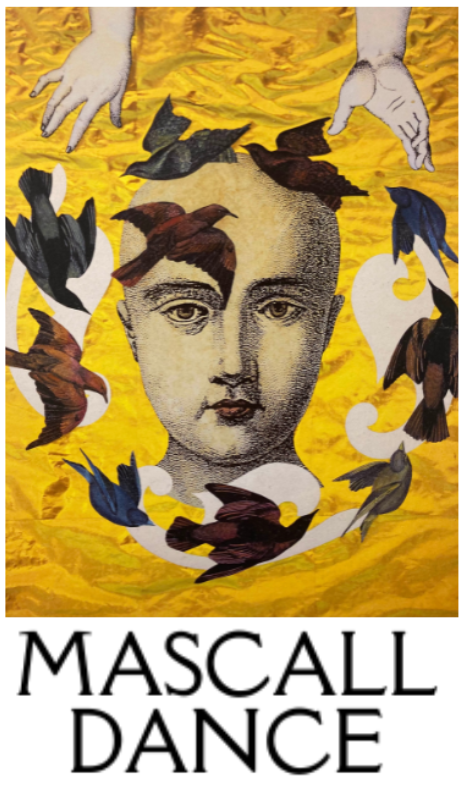STEVE PAXTON
MascallDance reflects on Steve Paxton. We will miss him deeply. Here are some nuggets -
“I spent my first decade as a dance maker working with walking. Fortunately I had other dance with which to make a living. How is it that I could be allowed to do that? In what way would the world of art today tolerate such basic research?
– Steve Paxton in dialogue with Miguel Gutierrez, Danspace Project Platform 2012: JUDSON NOW catalogue
“I hope that you will practice earnestly and with an eye towards what, in yourself, can be bettered by the form that you're practicing. Because at a certain point it becomes your responsibility, how you choose to grow. So I wish you all the best in that endeavor.”
“I wanted to speak today with young dancers, just to say, first of all, that the route to becoming a dancer is a long one. And this is because you have to grow the information: you don’t get the information; what you get is a ten-year course, in which you have to change your body; you have to actually develop, grow, direct your own growth and be directed by your teachers into a different body.
The reason for this is that the dances we [Western dancers] dance work with projection, or extension, or stretch, or pointing—the extremes of the geometry of the body. I don’t know why we’ve done that, except that for a theatre like the one we are in right now- I could make intimate gestures here on stage that might not carry to the top row. Maybe that’s the case, maybe as theatres got bigger, the dance became grander.
But, at any rate, it seems we have invented something that no other dance had ever done. It is quite an invention. What does it mean to have an invention in movement? In human growth? In the development of what we become? I don’t know if I can answer this question.”
Excerpted from March 9, 2019 two hour talk during Steve Paxton’s visit to the opening weekend of Steve Paxton: Drafting Interior Techniques, a retrospective exhibition of his work and legacy dedicated to the inner experience of the dancers, held at Culturgest in Lisbon, Portugal / Liliana Courtinho (Talks Curator for Culturgest). excerpts at link below:
“…(for) Contact Improvisation) I am researching weight and reflection. I was dancing with various styles, like collaborations with other dancers, musicians, and solo dance. With one body, one space, one night and little music, I have been trying what I can do, as everything only has one chance.… There are many philosophies about time, but it is hard to be practical with the idea that you only are alive in this moment; we all are simply projecting the future and carrying the past. Right there in the middle exists right now, which needs exercise too.”
“The skeleton stops growing when you’re 22 years old, but my best dancing happened in my fifties. So, there was thirty years of development to make something happen, and I was never able to find any other way. I needed it to acquire what I wanted to do. It is great physical energy, far more balance and sophistication, so that in my fifties I thought it was fabulous. At that time, I was dancing a two-hour dance program that included a 45-minute solo. I might be able to dance because of the development, but most people do not do this.”
https://www.shift.jp.org/en/archives/2009/05/steve_paxton.html/3/
Excerpt from The initiation of contact improvisation (2022) describing an improvisation by Paxton and Douglas Dunn. Find the full article by Steve Paxton HERE
Here’s a short excerpt from “Gravity” read by Steve.
And here is another glimpse of the origins of contact:
Excerpt from a talk given by Steve Paxton at CI36, Contact Improvisation's 36th Birthday Celebration in Huntingdon, PA, June 13, 2008; it appears in CQ, Vol. 34 No. 1, Winter/Spring 2009.
A Steven Paxton dance workshop on March 31, 1969 at Intermedia on Beatty Street in Vancouver in . Part of a series of influential workshops conducted by members of New York City’s Judson Dance Theater. Here, Steve Paxton does a demonstration while a Douglas Gallery employee looks on. Collection of the artist, Michael de Courcey, https://vancouverartinthesixties.com/archive/558 Works by de Courcey HERE
If people ask me how to Contact Improvise, I simply say, “Start small” or, “Start small for a long time.”
After fifty years of all this, I realize I should have said,
“Go beyond small to the place where no message is being given. Start there. Let small be the first of the pleasures to come.” Accept the first perturbation of that emptiness as the focus of the next moments. It is not a dance about you, or your partner. It is a dance about its movement.
From The initiation of contact improvisation (2022) describing an improvisation by Paxton and Douglas Dunn https://contactquarterly.com/contact-improvisation/newsletter/view/the-initiation-of-contact-improvisation#$2022 article by Steve Paxton HERE



